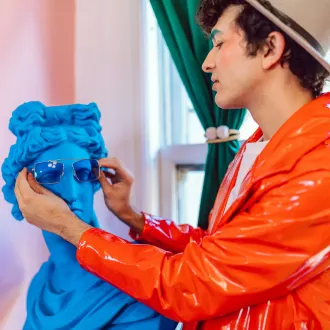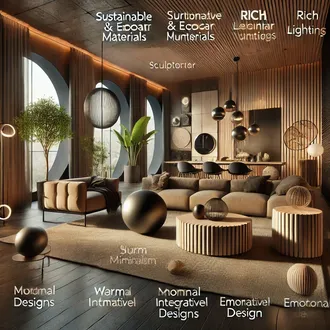Transcription Meanings and effects of color (I)
The use of color in interior decoration projects must take into account the great emotional influence that not only the shade of the colors exert on individuals, but also the experiences of each individual and the symbolic meaning that he/she gives to each color, depending on his/her culture, religion and family traditions.
That is why the decorator, instead of classifying colors into good and bad, should think in which places and in which measures to apply them, taking into account their psychological and symbolic significance for the client. In this presentation we will give you some general indications about the meaning and effects of colors on people's psychology.
Red
The color red symbolizes blood, fire, strength, passion, challenge and struggle; it can also symbolize aggressiveness, violence, danger, cruelty and destruction.
Red helps to keep us stimulated while we work or perform any other activity and provokes an instinctive and intense impulse to satisfy our needs or desires; for this reason it is attributed, above all, the property of stimulating appetite.
In general, the color red should not be used to paint large areas of a room because its excessive use could cause shock and fatigue. Its use is recommended to accentuate small spaces or sections of the dining room, living room and corridors or for furniture or other auxiliary elements of the decoration (cushions, carpets, rugs, etc.).
Among the colors analogous to red, the following stand out:
- pink represents femininity, delicacy, love and weakness. Pink tones are widely used in the decoration of girls' bedrooms, helping to create a warm, cozy and conducive to sleep.
- Terracotta or brown tones represent the masculine, the realistic, the comfortable, the severe. It is used in the decoration of any of the interior surfaces of a house.
Orange
- Orange represents joy, enthusiasm, action, movement; it also symbolizes sensuality, lust and immaturity.
- Orange brings us comfort, confidence, and security; therefore it is the ideal color for welcoming foyers, entrances and hallways.
- It is also suitable for living rooms, play areas, dining rooms and kitchens, as it stimulates conversation, intellect, appetite and digestion.
Orange is not recommended for bedrooms or study rooms as it can be too stimulating for sleep or concentration.
Yellow
Yellow symbolizes the sun, light, energy, power, money and material abundance; it also symbolizes betrayal and anger. It conveys feelings associated with a sunny day: joy, confidence, security and well-being.
Pure yellow is generally not used on interior walls, because it can be irritating. Orange or lemon yellow tones are often used in rooms with less access to natural light and in study rooms, kitchens, bathrooms and corridors.
Yellow tones are not recommended in bedrooms because they create very light environments that are not conducive to restful sleep. Page break.
Green
- The color green symbolizes emotional balance, hope, growth, harmony, peace; it also symbolizes jealousy and poison.
- Green is a color that is widely used in interior decoration because it can be easily adapted to the different needs of each room.
If blue is added to it, it cools down, becoming a more relaxing color, ideal for girls' and boys' bedrooms, because it is also gender neutral. Adding yellow, on the other hand, imbues it with the light and energy needed for hallways, living or play rooms, and study rooms.
color meaning 1




